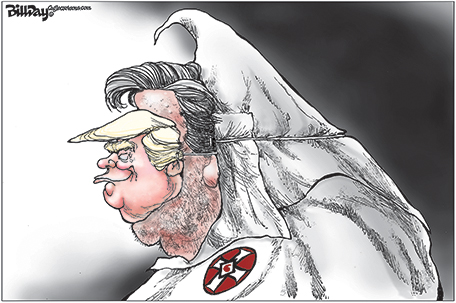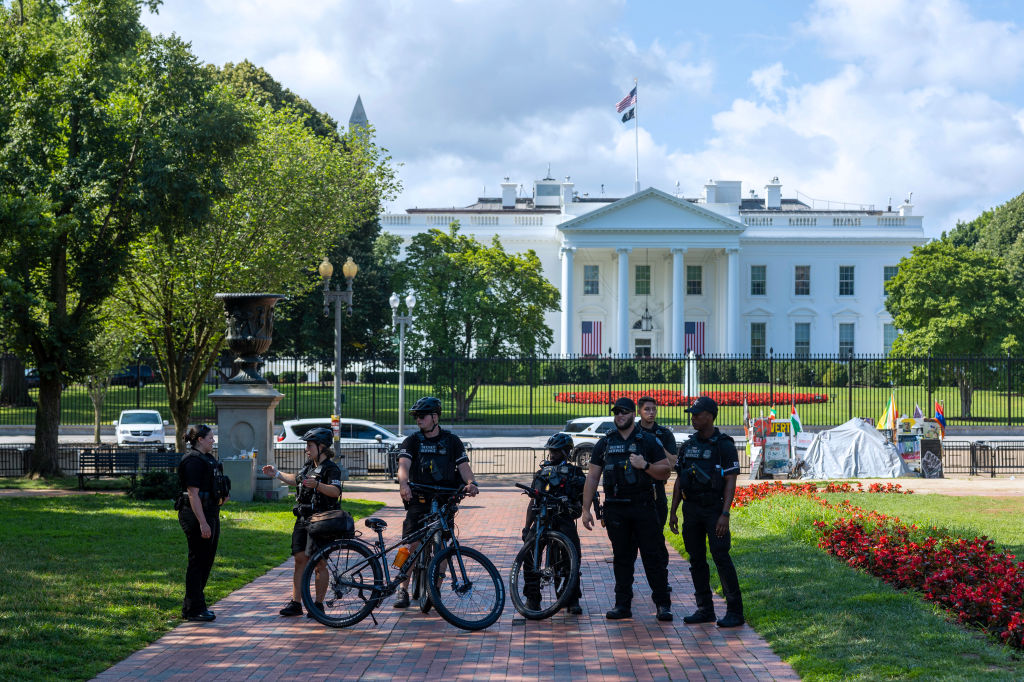Property Rights Under Siege: An American Battleground

Table of Contents
Eminent Domain Abuse: The Taking of Private Property
Eminent domain, the power of the government to take private property for public use, is a legally recognized concept enshrined in the Fifth Amendment of the U.S. Constitution. However, the clause mandates "just compensation," a crucial safeguard often disregarded in practice. The legitimate use of eminent domain involves projects clearly benefiting the public, such as building roads, schools, or utilities. The abuse, however, lies in its application for private development, often bypassing fair compensation and due process.
- Examples of Eminent Domain Abuse:
- Kelo v. City of New London (2005): This Supreme Court case permitted the seizure of private homes for private development, sparking widespread outrage and highlighting the potential for abuse. The ruling broadened the definition of "public use," allowing for takings that primarily benefit private entities.
- Corporate Benefit: Numerous instances exist where eminent domain has been used to seize land for corporate projects, such as casinos, shopping malls, or industrial parks, with minimal or no public benefit. These actions often displace residents and businesses, causing significant economic and social disruption.
The lack of transparency and due process in some eminent domain proceedings further exacerbates the problem. Affected property owners often lack adequate legal representation or the resources to fight lengthy and expensive legal battles.
Zoning Regulations and Restrictive Land Use Policies
Overly restrictive zoning regulations can significantly limit property owners' rights to develop their land, hindering economic growth and impacting the availability of affordable housing. These regulations, while aiming to maintain order and aesthetic standards, can unintentionally stifle innovation and create barriers to entry for smaller developers.
- Specific Zoning Issues:
- Minimum Lot Sizes: Mandating large minimum lot sizes prevents the construction of affordable housing, exacerbating the housing crisis in many areas.
- Building Type Restrictions: Restrictions on building types, such as limiting the construction of multi-family dwellings, can artificially inflate housing costs and reduce housing choices.
- Lengthy Permitting Processes: Complex and time-consuming permitting processes create significant hurdles for developers, adding costs and delays that can make projects financially unfeasible.
Regulatory capture, where regulatory agencies become overly influenced by special interests, can further exacerbate these issues, leading to regulations that benefit powerful stakeholders at the expense of property owners.
Environmental Regulations and Property Rights
The balance between environmental protection and property rights is a complex and often contentious issue. While strong environmental regulations are crucial for protecting natural resources, they can unintentionally limit property use and diminish property value.
- Specific Environmental Regulatory Challenges:
- Wetland Restrictions: Regulations protecting wetlands, while essential for environmental health, can significantly restrict development opportunities in areas with abundant wetlands.
- Endangered Species Regulations: The presence of endangered species on a property can severely limit or even prohibit development, even if the species' presence is temporary.
- Clean Water Act Regulations: Regulations aimed at protecting water quality can impact property values and development potential, especially for properties near waterways.
Finding a balance requires creating fairer and more efficient environmental regulations that consider both environmental concerns and the economic impact on property owners.
The Role of the Courts in Protecting Property Rights
The judicial system plays a vital role in upholding or limiting property rights. The effectiveness of legal recourse for property owners facing challenges varies widely, depending on the specific case, jurisdiction, and the resources available to the property owner.
- Judicial Actions:
- Successes and Failures: Legal challenges to zoning and eminent domain actions have had mixed results, highlighting the need for stronger judicial protection of property rights.
- Judicial Precedent: Supreme Court rulings and lower court precedents significantly shape the legal landscape for property rights, impacting future cases and interpretations of existing laws.
- Legal Representation: Access to competent legal representation is crucial for property owners facing legal challenges, but often proves to be a significant financial barrier.
The need for stronger judicial protection of property rights, ensuring fair and consistent application of the law, remains paramount.
Advocating for Property Rights: Community Action and Legal Reform
Protecting property rights requires active community engagement and robust legal reforms. Grassroots movements and advocacy groups play a crucial role in raising awareness, influencing policy, and providing support to affected property owners.
- Effective Advocacy Strategies:
- Advocacy Groups: Organizations dedicated to protecting property rights provide valuable resources, legal support, and advocacy efforts to influence policy change.
- Voter Participation: Electing officials who champion property rights and understand the needs of their constituents is critical to enacting meaningful reforms.
- Community Mobilization: Organized community action, through petitions, protests, and public awareness campaigns, can exert significant pressure on policymakers.
Legal reforms that strengthen property rights protections, provide clearer guidelines for eminent domain and zoning regulations, and ensure access to justice for all property owners are essential to safeguarding this fundamental right.
Conclusion: Securing Your Property Rights in America
The threats to property rights in America are multifaceted, encompassing eminent domain abuse, restrictive zoning regulations, burdensome environmental regulations, and inconsistent judicial protection. Protecting your property rights is crucial not only for individual liberty but also for economic prosperity and community stability. The fight for property rights is a continuous battle requiring vigilance and active participation.
We urge you to contact your elected officials, join advocacy groups dedicated to protecting property rights, and stay informed about relevant legislation. Protecting your property rights and engaging in the fight for Property Rights in America is an investment in your future and the future of our nation. Don't stand idly by while your property rights are under siege; actively participate in securing your future and the future of American property ownership.

Featured Posts
-
 Should You Return To A Company That Laid You Off
Apr 26, 2025
Should You Return To A Company That Laid You Off
Apr 26, 2025 -
 Colgate Cl Q Quarter Number Earnings Sales And Profit Decline Due To Tariffs
Apr 26, 2025
Colgate Cl Q Quarter Number Earnings Sales And Profit Decline Due To Tariffs
Apr 26, 2025 -
 White House Cocaine Secret Service Investigation Concludes
Apr 26, 2025
White House Cocaine Secret Service Investigation Concludes
Apr 26, 2025 -
 Fighting The Worlds Richest An American Battleground Over Property Rights
Apr 26, 2025
Fighting The Worlds Richest An American Battleground Over Property Rights
Apr 26, 2025 -
 Covid 19 Pandemic Lab Owner Pleads Guilty To Fraudulent Testing
Apr 26, 2025
Covid 19 Pandemic Lab Owner Pleads Guilty To Fraudulent Testing
Apr 26, 2025
